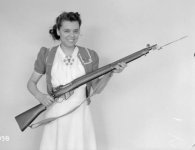I picked this one up along with the 1941 Mosin. I have no interest in Enfields, but since both rifles were made in the same year, I had to buy one. Even to my non-enfield expert eyes, this rifle is not all original, but I am curious about what is and is not. The stock is refinished but original since I can barely see the last two digits of the serial number. The front band isn't(I have read some reference material posted in the sticky), so are the cocking piece and the butt plate. The bolt handle is force matched, however I don't see any FTR marks. Missing the adjustable rear sight? What is this thing worth?
Attachments
-
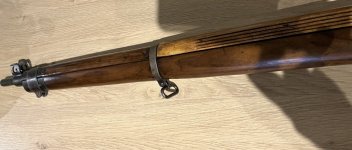 IMG_1617.jpg73.9 KB · Views: 215
IMG_1617.jpg73.9 KB · Views: 215 -
 IMG_1626.jpg77 KB · Views: 220
IMG_1626.jpg77 KB · Views: 220 -
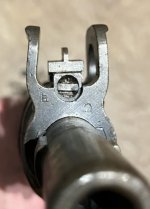 IMG_1625.jpg65.9 KB · Views: 215
IMG_1625.jpg65.9 KB · Views: 215 -
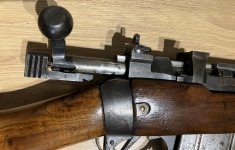 IMG_1624.jpg122.1 KB · Views: 207
IMG_1624.jpg122.1 KB · Views: 207 -
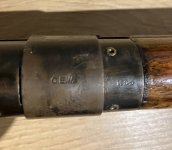 IMG_1623.jpg85.6 KB · Views: 208
IMG_1623.jpg85.6 KB · Views: 208 -
 IMG_1622.jpg94.9 KB · Views: 209
IMG_1622.jpg94.9 KB · Views: 209 -
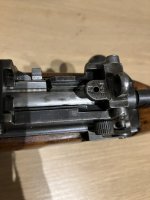 IMG_1621.jpg75.1 KB · Views: 208
IMG_1621.jpg75.1 KB · Views: 208 -
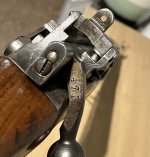 IMG_1620.jpg126.8 KB · Views: 212
IMG_1620.jpg126.8 KB · Views: 212 -
 IMG_1619.jpg136 KB · Views: 229
IMG_1619.jpg136 KB · Views: 229 -
 IMG_1618.jpg167.1 KB · Views: 225
IMG_1618.jpg167.1 KB · Views: 225 -
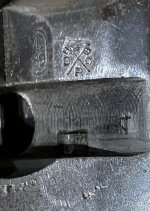 IMG_1628.jpg135.4 KB · Views: 222
IMG_1628.jpg135.4 KB · Views: 222

















































